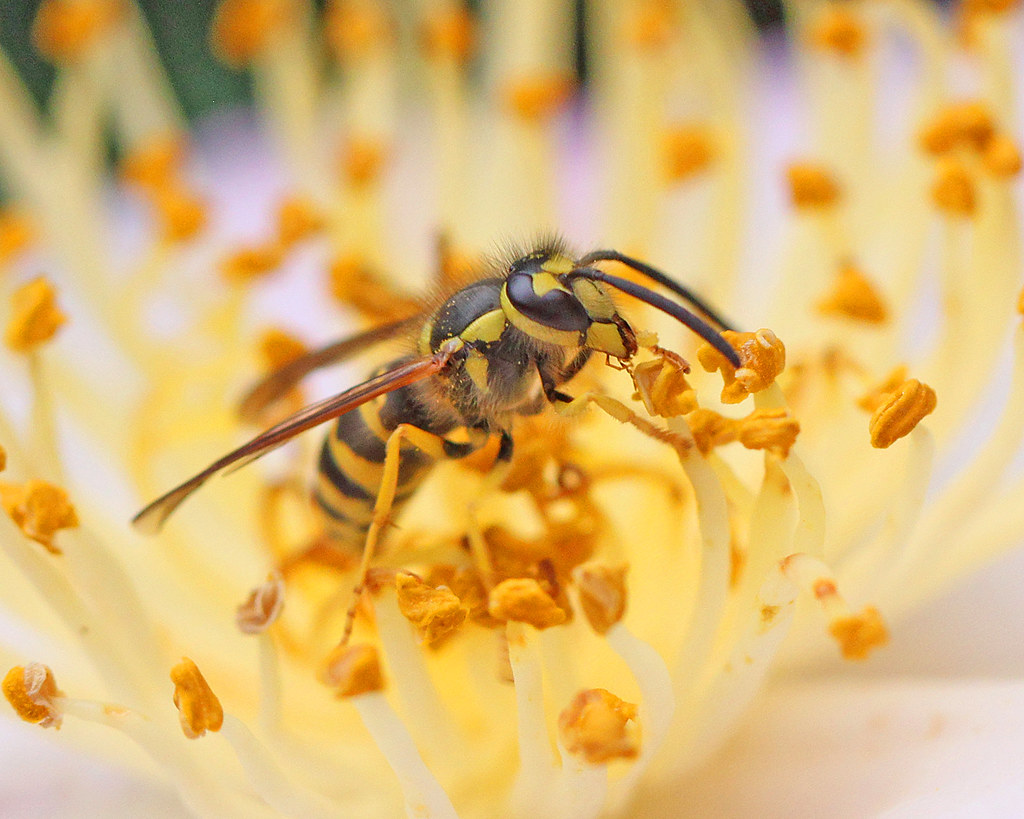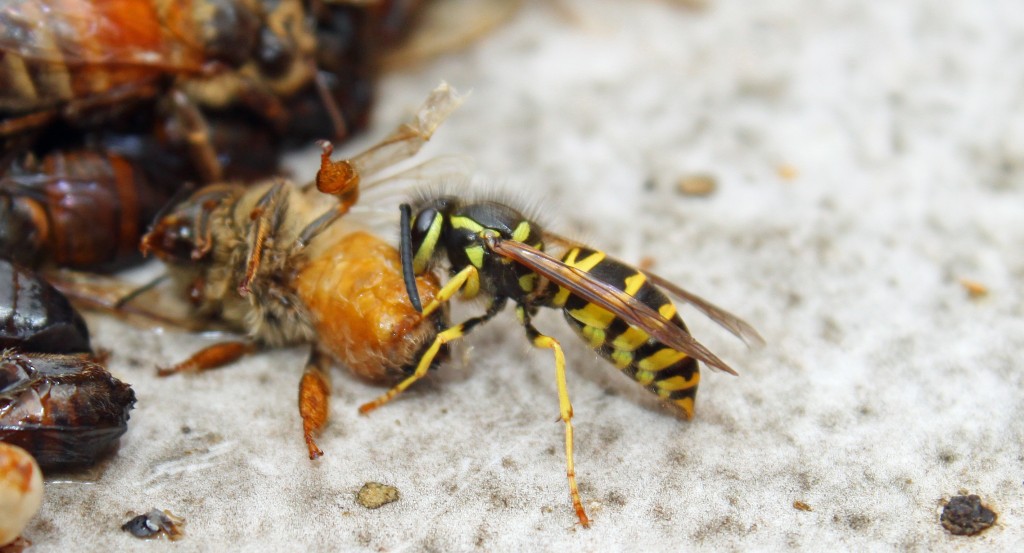Yellow jackets are known for their aggressive nature, especially when they feel threatened. But their diet is often misunderstood. While many people think of these insects as mere nuisances at picnics, they play a vital role in the ecosystem. Let’s explore what yellow jackets eat and how their feeding habits change throughout the year.

 It’s also a misconception that yellow jackets can survive solely on nectar, like bees. While nectar is a part of their diet, especially for adult yellow jackets, it is far from their main source of nutrition during the spring and summer months.
It’s also a misconception that yellow jackets can survive solely on nectar, like bees. While nectar is a part of their diet, especially for adult yellow jackets, it is far from their main source of nutrition during the spring and summer months.

What Do Yellow Jackets Eat in the Spring and Summer?
During the warmer months, yellow jackets primarily feed on protein-rich foods. They are scavengers, often found hovering around garbage bins or outdoor gatherings, seeking out meat. This is because they need protein to feed their growing larvae. Yellow jackets hunt other insects such as flies, caterpillars, and beetles to provide nourishment for their young. Adult yellow jackets will chew the insects into a pulp and then deliver the pre-digested food to the larvae. In return, the larvae produce a sugary secretion that the adults feed on. This exchange is crucial for the survival of the colony. In fact, yellow jackets’ predatory nature helps keep pest populations under control, making them important players in maintaining ecological balance.What Do Yellow Jackets Eat in the Fall?
As the weather cools, yellow jackets’ feeding habits shift. In the fall, the larvae are fully grown, and the colony no longer requires protein. The adults’ focus turns to sugary foods. During this time, yellow jackets are attracted to fruit, soda, nectar, and other sweets. This is why they seem particularly aggressive around sugary drinks and snacks in the late summer and fall. With the colony’s reproductive cycle nearing its end, the worker yellow jackets begin to die off, while the queen prepares to hibernate. As the availability of food decreases in nature, yellow jackets become more desperate and aggressive in their search for sugar. This is when people are most likely to have negative encounters with these insects.Why Do Yellow Jackets Eat Other Insects?
Yellow jackets are opportunistic hunters. As mentioned earlier, they feed on protein to nurture their young, but their role as predators has ecological significance. By preying on insects, yellow jackets help reduce the number of garden pests. In a sense, they provide natural pest control, though their aggressive behavior often overshadows this benefit. In addition to hunting live prey, yellow jackets are scavengers, feasting on dead animals and leftover meats. This scavenging behavior can sometimes lead them to kitchens, pet food bowls, or picnic areas. Their need for protein means they are not picky about the source.Misconceptions About What Yellow Jackets Eat
There are several myths about yellow jackets and their feeding habits. Some believe they only feed on sugary foods, but this is true only in the latter part of their life cycle. Others think yellow jackets primarily seek out human food, though their natural preference is for insects and fruit. It’s also a misconception that yellow jackets can survive solely on nectar, like bees. While nectar is a part of their diet, especially for adult yellow jackets, it is far from their main source of nutrition during the spring and summer months.
It’s also a misconception that yellow jackets can survive solely on nectar, like bees. While nectar is a part of their diet, especially for adult yellow jackets, it is far from their main source of nutrition during the spring and summer months.
How to Prevent Yellow Jackets from Accessing Food
Since yellow jackets are attracted to both protein and sugary foods, keeping them away requires proper food management:- Secure trash cans: Ensure outdoor bins are tightly sealed, as yellow jackets can be drawn to meat scraps and sugary residues.
- Clean up spills: Wipe down outdoor eating areas, especially after meals, to remove sugary spills or food crumbs.
- Cover drinks: When spending time outdoors, keep sugary drinks covered to avoid attracting yellow jackets.
- Remove fallen fruit: Yellow jackets are drawn to overripe or rotting fruit, so cleaning up fallen fruit in gardens can reduce their food source.
Myths and Facts about Yellow Jackets’ Feeding Habits
| Myth | Fact |
| Yellow jackets only eat sugary foods. | Yellow jackets primarily eat protein-rich foods in the spring and summer, such as other insects. |
| They only feed on human food. | While yellow jackets may scavenge human food, they are more likely to hunt for insects or feed on fruit. |
| Yellow jackets can survive solely on nectar. | Nectar is part of their diet, but yellow jackets need protein to sustain their larvae. |
| They are only pests and don’t serve a purpose. | Yellow jackets play a crucial role in natural pest control by hunting other insects. |
| Yellow jackets eat the same food year-round. | Their diet shifts from protein in the warmer months to sugar in the fall as they prepare for winter. |




